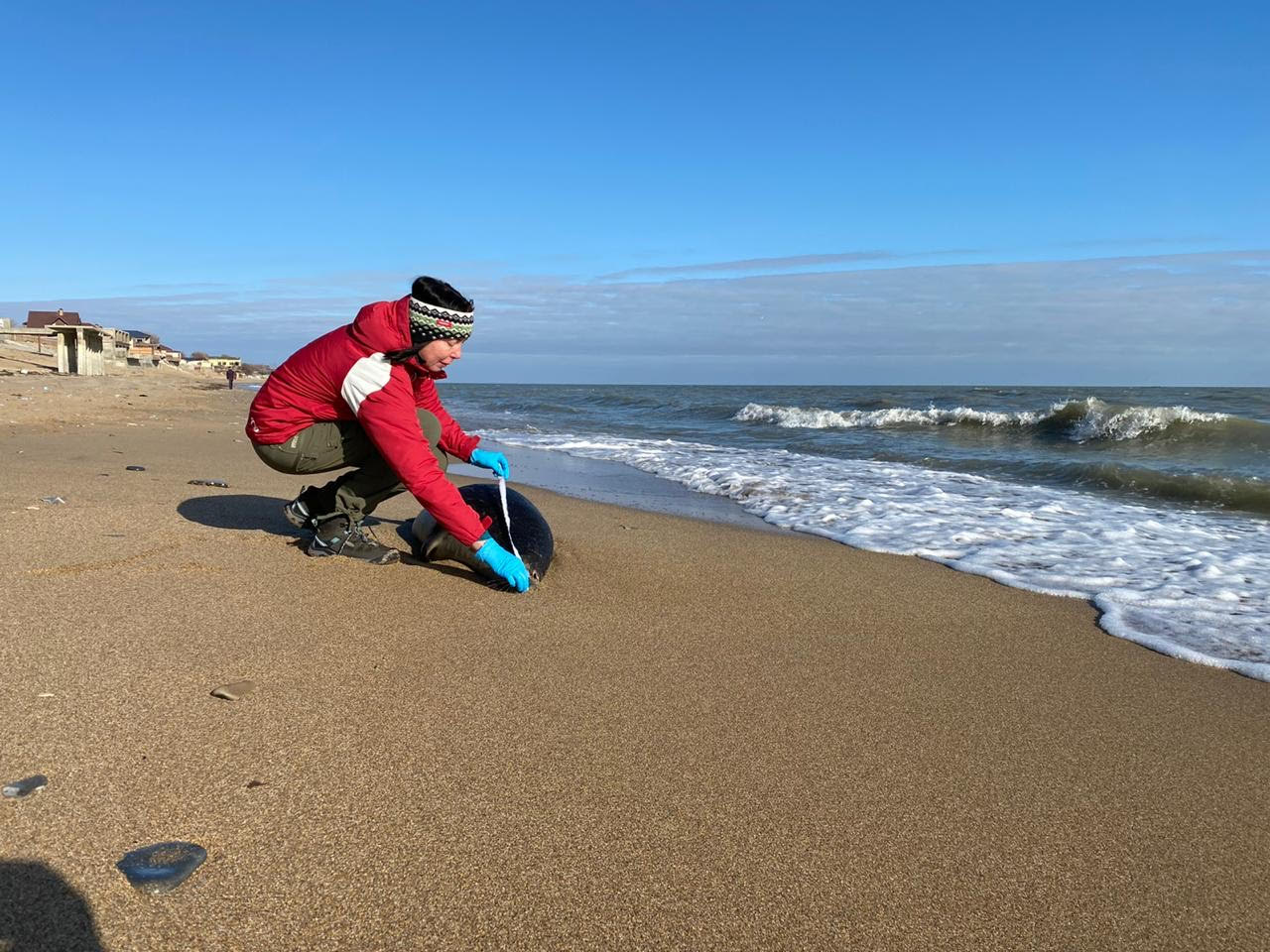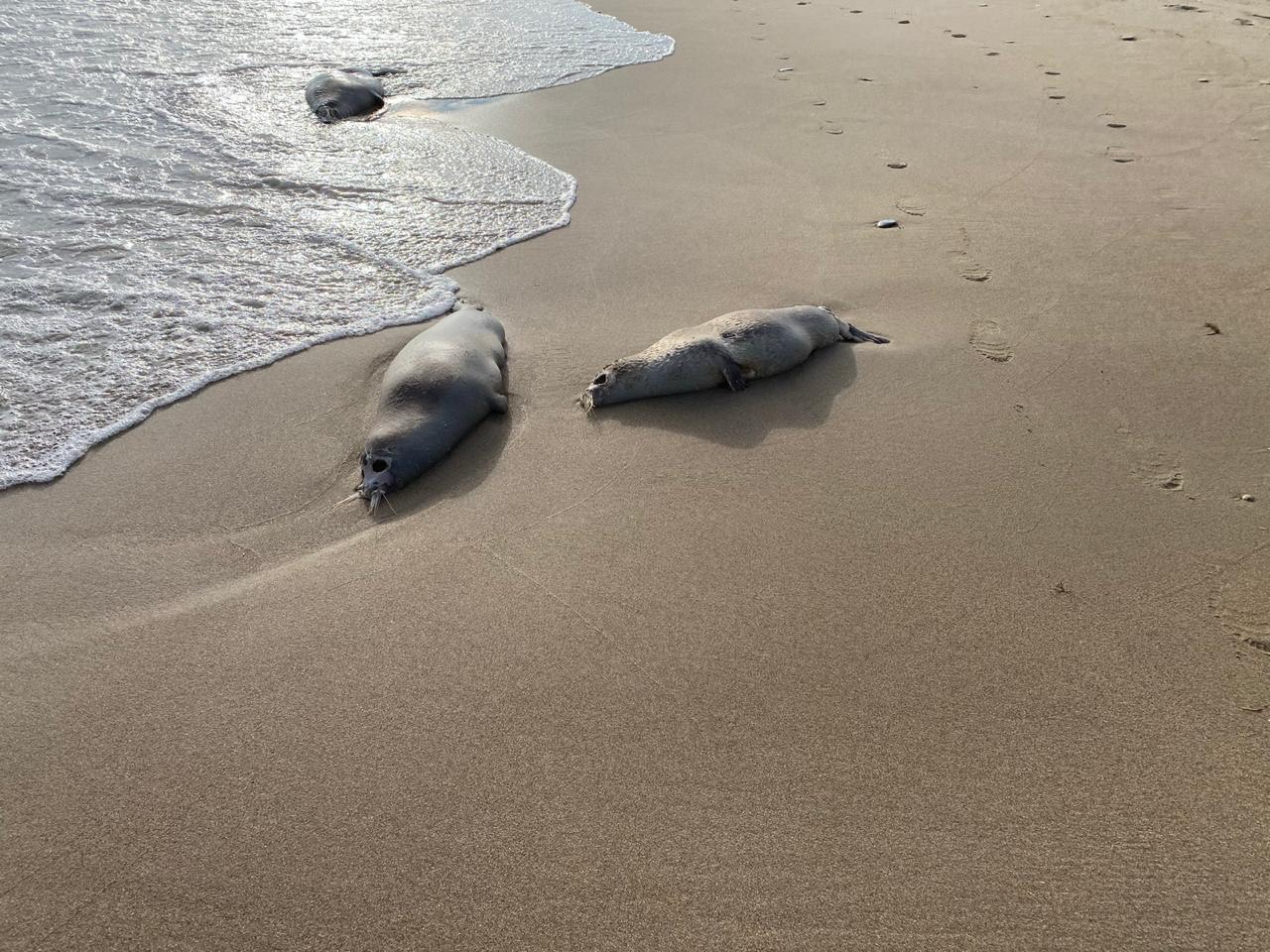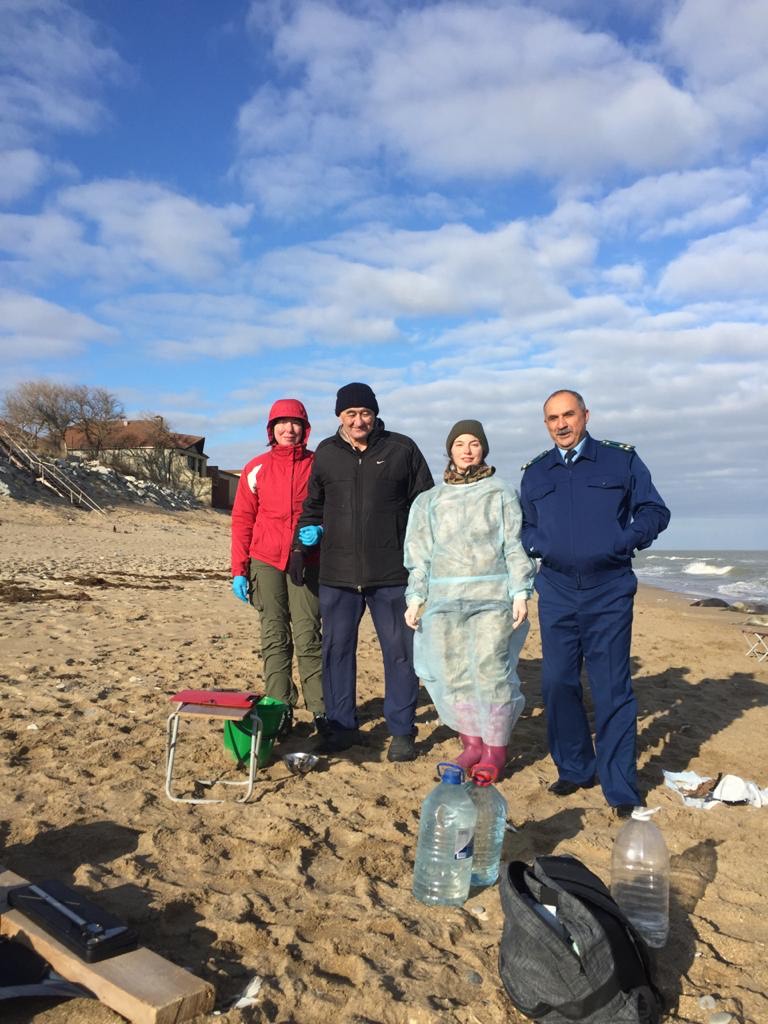
At the beginning of December 2020, we received the first information about the stranding of the corpses of the Red Book Caspian seals on the Dagestan coast. Employees of the A.N. Severtsov Institute of Ecology and Evolution RAS (IEE RAS) who have been studying this species within the framework of the international Kazakh-Russian Program of Caspian Seal Research in the Northern Caspian Sea (2019-2023), have left for the areas of stranding after the first reports.
On-site studies were organized jointly with the staff of the Caspian Institute of Biological Resources of the Dagestan Scientific Center of the Russian Academy of Sciences (PIBR DNC RAS) and a veterinarian of the Moskvarium Center for Oceanography and Marine Biology. Later, when the number of dead animals rose to the hundreds, employees of the All-Russian Research Institute of Fisheries and Oceanography (VNIRO) joined the IEE RAS expedition, which contributed to the expansion of the range of work.

For molecular-virological, toxicological, hormonal, genetic, histological and morphological studies, researchers from IEE RAS and a veterinarian of the Center for Oceanography and Marine Biology "Moskvarium" took samples of biological material from 13 dead seals. These were mainly adult females - five of them were pregnant. One of the animals showed signs of entangling, left over from being caught in the net.

Dead seals were monitored along the entire coastline accessible for walking. Employees of the PEE RAS and PIBR DNC RAS surveyed 30 km along the coast. Over 300 dead seals were found in this area. All the animals found were carefully photographed, the coordinates of their detection were recorded, which would later be used to compile a map of strandings. To account for the number of seals thrown onto sandy beaches open to the sea, 10 linear counting sites were set evenly throughout the coastal zone. Counting of dead animals at these sites and subsequent extrapolation showed that on the sandy beaches open to the sea, the length of which along the Dagestan coast of the Caspian Sea reaches 160 km, almost two thousand seals could have thrown themselves onto the shore, with an average density of more than a dozen individuals per kilometer of the coastline.
The information received to date is not sufficient to form a hypothesis about the reasons for the death of such a large number of Caspian seals. All collected samples will be sent for research to various laboratories, and efforts of various organizations will be combined to find out the cause of the death of the seals.
